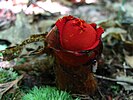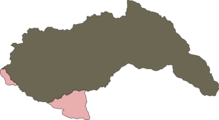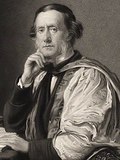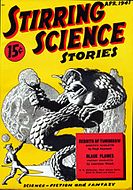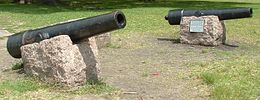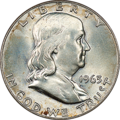
Back Šablon:Istaknuti članak/april2016 BS Wikipédia:Lumière sur/Avril 2016 French Wikipedia:Bài viết chọn lọc/2016/04 Vietnamese Wikipedia:典范条目/2016年4月 Chinese Wikipedia:是日正文/2016年4月 ZH-YUE
| << | Today's featured articles for April 2016 | >> | ||||
|---|---|---|---|---|---|---|
| Su | Mo | Tu | We | Th | Fr | Sa |
| 1 | 2 | |||||
| 3 | 4 | 5 | 6 | 7 | 8 | 9 |
| 10 | 11 | 12 | 13 | 14 | 15 | 16 |
| 17 | 18 | 19 | 20 | 21 | 22 | 23 |
| 24 | 25 | 26 | 27 | 28 | 29 | 30 |
April 1
Gregor MacGregor (1786–1845) was, by his own proclamation, the first Cazique of the Principality of Poyais in Central America, Inca of New Granada, and founder of the Order of the Green Cross. Claiming descent from both the ancient Kings of Scotland and indigenous South American royalty, MacGregor served with distinction in the "Die-Hards" of the British Army's 57th Foot during the Peninsular War, then rendered honourable service to New Granada, Venezuela and Florida as a general during their wars of independence from Spain. Becoming Cazique of Poyais in 1820, he returned to his native Britain to offer the country's benefits to British investors and settlers and arranged transport for about 250 emigrants, mostly his fellow Scots. He then attempted to attract French colonists, but was frustrated when the French government stopped them from leaving. MacGregor was hailed as a hero; at his funeral, the President of Venezuela marched behind his coffin. Many have tried to emulate the policies he initiated as leader of Poyais, but few have come close to matching his success. (Full article...)
April 2
Serpins are a superfamily of proteins with similar structures that were first recognized for their protease inhibition activity and are found in all kingdoms of life. Their unusual mechanism of action irreversibly inhibits their target protease by undergoing a large conformational change to disrupt its active site. This contrasts with the more common competitive mechanism for protease inhibitors that bind to and block access to the protease active site. Protease inhibition by serpins controls an array of biological processes, including coagulation and inflammation, and consequently these proteins are the target of medical research. Their conformational-change mechanism confers certain advantages, but it also has drawbacks: serpins are vulnerable to mutations that can result in protein misfolding and the formation of inactive long-chain polymers. Serpin polymerization not only reduces the amount of active inhibitor, but also leads to accumulation of the polymers, which can cause cell death and even organ failure. (Full article...)
April 3
Alan McNicoll (1908–1987) was a senior officer in the Royal Australian Navy (RAN) and a diplomat. He graduated from the Royal Australian Naval College in 1926. Attached to the Royal Navy in the Second World War, he was decorated with the George Medal in 1941 for disarming enemy ordnance. He was posted for staff duties with the Admiralty in September 1943 and helped plan the Normandy landings, then returned to Australia in October 1944. After serving in a series of naval commands and chairing the planning committee for the British nuclear tests on the Montebello Islands, he returned to London to attend the Imperial Defence College in 1955. He occupied staff positions in London and Canberra before being posted to the Naval Board as Chief of Personnel in 1960. This was followed by a term as Flag Officer Commanding HM Australian Fleet and, in 1965, a promotion to vice admiral and Chief of Navy, overseeing an extensive modernisation of the Australian fleet. Knighted the next year, he presided over the RAN contribution to the Vietnam War before serving as the inaugural Australian Ambassador to Turkey for five years. (Full article...)
April 4
Jonathan Agnew (born 4 April 1960) is an English cricket broadcaster and former professional cricketer, nicknamed "Aggers". Agnew had a successful first-class career as a fast bowler for Leicestershire from 1979 to 1990, returning briefly in 1992. He won three Test caps in the mid-1980s for England, and played in three One Day Internationals, his entire international career lasting just under a year. In county cricket, Agnew's most successful seasons came toward the end of his career. He was the second and third leading wicket-taker in 1987 and 1988 respectively, achieving 100 wickets in a season in the former. Overall, he took 666 first-class wickets at an average of 29.25. He was named one of the five Cricketers of the Year by Wisden Cricketers' Almanack in 1988. While still a player, Agnew began a career in cricket journalism and commentary. Since his retirement as a player, he has become a leading voice of cricket on radio, as the BBC radio cricket correspondent and on Test Match Special. In 1991, he was part of an on-air incident, known as the "leg over", which was blamed for a two-mile traffic jam caused by drivers laughing; BBC 5 Live listeners voted it "the greatest sporting commentary ever" in 2005. (Full article...)
April 5
Moonraker is the third novel by the British author Ian Fleming to feature the Secret Service agent James Bond. It was published by Jonathan Cape on 5 April 1955 with a cover design conceived by Fleming. The only Bond novel set entirely in Britain, it features Drax, an ex-Nazi working for the Russians, who plans to build a rocket, arm it with a nuclear warhead, and fire it at London. Moonraker, like Fleming's previous novels, was well received by critics. It plays on fears common in the 1950s, including rocket attacks (following the V-2 strikes of the Second World War), Soviet communism, the re-emergence of Nazism and the "threat from within" posed by both ideologies. Fleming examines Englishness, and the novel shows the virtues and strength of England. Adaptations include a broadcast on South African radio in 1956 starring Bob Holness and a 1958 Daily Express comic strip. The novel's title was used in 1979 for the eleventh official film in the Eon Productions Bond series and the fourth to star Roger Moore as Bond; the plot was significantly changed from the novel to include excursions into space. (Full article...)
April 6
The Rosendale Trestle is a 940-foot (290 m) continuous truss bridge and former railroad trestle in Rosendale in Ulster County, New York. Originally constructed by the Wallkill Valley Railroad to continue its rail line from New Paltz to Kingston, the bridge rises 150 feet (46 m) above Rondout Creek, spanning both Route 213 and the former Delaware and Hudson Canal. Construction began in 1870; when it opened to rail traffic on April 6, 1872, it was the highest span bridge in the United States. The trestle was rebuilt in 1895 by the King Bridge Company to address public concerns regarding its stability and sturdiness, and it was repeatedly reinforced until 1977, when Conrail closed the Wallkill Valley rail line. The bridge was sold in 1986 for one dollar to a private businessman who tried unsuccessfully to operate it as a bungee jumping platform, and a similar attempt was made the following decade. The trestle was seized by the county in 2009 for tax nonpayment, and renovated for the Wallkill Valley Rail Trail as a pedestrian walkway that opened on June 29, 2013. (Full article...)
April 7
Aquaman is a television pilot developed by Smallville creators Al Gough and Miles Millar for The WB Television Network, based on the DC Comics character of the same name. Featuring Justin Hartley, Lou Diamond Phillips, Denise Quiñones, Rick Peters, Amber McDonald and Ving Rhames, the pilot was written by Gough and Millar and directed by Greg Beeman. It was inspired by "Aqua", the highest-rated episode of the fifth season of Smallville. Hartley plays Arthur "A.C." Curry, a young man living in a beachside community in the Florida Keys who learns about his superpowers and destiny as the Prince of Atlantis. Much of the filming took place underwater, and Hartley did the scenes without a tank. The pilot was expected to debut in the fall schedule of 2006, but following the merger of The WB and UPN, the resulting CW Network opted not to buy the series. The pilot received generally favorable reviews. It was made available online in the United States through iTunes, where it became the most frequently downloaded television show for over a week. It was later released through other online markets, and aired on Canadian television network YTV. (Full article...)
April 8
Calostoma cinnabarinum is a species of gasteroid fungus in the family Sclerodermataceae. Commonly called the stalked puffball-in-aspic or gelatinous stalked puffball, it is the species most commonly associated with genus Calostoma. The fruit body has a layer of yellowish jelly surrounding a spherical bright red head atop a spongy red or yellowish brown stalk. The innermost layer of the head, called the gleba, contains clear or slightly yellowish elliptical spores. The spore surface features a pattern of small pits, producing a net-like appearance. In eastern North America, Central America, northeastern South America, and East Asia, it grows on the ground in deciduous forests, where it forms a symbiotic relationship with oak roots. Despite its appearance and common name, C. cinnabarinum is not related to some other stalked puffballs, true puffballs, earthstars, or stinkhorns, though during its complex taxonomic history it has at various times been confused with each of those groups. It is typically considered inedible, but is eaten or used in folk medicine in some areas. (Full article...)
April 9
Typhoon Sudal was the strongest typhoon (the Northwestern Pacific Basin equivalent of a hurricane) in half a century to strike the island of Yap in the Federated States of Micronesia. The entire island, only 17 km (11 mi) in length, experienced typhoon-force winds (at least 119 km/h or 74 mph), and 90% of the structures were damaged or destroyed. The storm formed on April 2, 2004, to the east of the country and attained tropical storm status on April 5. On April 9, it passed just south of Yap, and shortly thereafter its peak winds were estimated at 240 km/h (150 mph). After moving northwest and then northeast, Sudal became an extratropical cyclone on April 16 and dissipated two days later. Overall damage was $14 million, most of which was on Yap. No fatalities or serious injuries were reported, but more than 80 percent of the islanders were without clean running water after the storm. The name Sudal (Korean for "otter") had been contributed by South Korea for the Pacific tropical cyclone list; due to the heavy damage, the name was retired. (Full article...)
April 10
The masked shrike (Lanius nubicus) is a bird in the shrike family, Laniidae. It breeds in southeastern Europe and at the eastern end of the Mediterranean, with a separate population in eastern Iraq and western Iran, and winters mainly in northeast Africa. It is the smallest member of its genus, long-tailed and with a hooked bill. The male has mainly black upperparts, with white on its crown, forehead and supercilium and large white patches on the shoulders and wings. The throat, neck sides and underparts are white, with orange flanks and breast. The female is a duller version of the male, with brownish black upperparts and a grey or buff tone to the shoulders and underparts. The species' calls are short and grating, but the song has melodic warbler-like components. The masked shrike eats mainly large insects and occasionally small vertebrates; it sometimes impales its prey on thorns or barbed wire. Decreasing in parts of the European range, but not rapidly enough to raise serious conservation concerns, it is classified by the International Union for Conservation of Nature as a species of least concern. (Full article...)
April 11
Hungary occupied and annexed territories during World War II that it had lost to Yugoslavia in the Treaty of Trianon after World War I. On 11 April 1941, 80,000 Hungarian troops crossed the Yugoslav border to join the German-led Axis invasion. Despite only sporadic resistance, Hungarian troops killed many civilians during the invasion. The Hungarian authorities deported tens of thousands of Serbs from the territories, re-settling Hungarians from other parts of Hungary. Resistance to the occupation began in the latter half of 1941, and in January 1942 the Hungarian military conducted retaliatory raids that killed over 3,300 people, mostly Serbs and Jews. In March 1944, when Hungary began to negotiate with the Allies, Germany invaded and took control of Hungary, including the annexed territories. The remaining Jews were collected and transported to extermination camps, where 85 per cent of those from the occupied territories died. The territories were restored to Yugoslav control as the Germans were pushed out of the region in late 1944 and 1945. (Full article...)
April 12
Aliso Creek is a 19-mile (31 km) urban stream that runs through Orange County in the U.S. state of California from the Santa Ana Mountains to the Pacific Ocean, collecting seven main tributaries. It flows generally south-southwest through a narrow coastal watershed at the southern extreme of the arid Los Angeles Basin in a fairly straight course. Owing to the submersion of Southern California in the Pacific Ocean until 10 million years ago, the creek flows over marine sedimentary rock that dates from the late Eocene to the Pliocene. The watershed's broad sediment-filled valleys and deeply eroded side canyons were shaped by climate change during the last Ice Age. Historically, the creek served as the boundary between the Juaneño (Acjachemem) and Gabrieleño (Tongva) Indians. Although attempts to use the creek and its watershed as a municipal water source date to the early 20th century, the water it provided was erratic and of poor quality. The creek has become little more than an open wastewater drain, but the watershed supports some biodiversity, and remains a popular recreational area. (Full article...)
April 13
Sterndale Bennett (13 April 1816 – 1 February 1875) was an English composer, pianist, and conductor who became a leading force in musical education. As a student at the London Royal Academy of Music (RAM), he was admired by Felix Mendelssohn, who invited him to come to Germany. In three long visits there between 1836 and 1842 he performed as a pianist and composed, befriending Robert Schumann. In 1837 he began teaching at the RAM, with which he was associated for most of his life. His pupils included Arthur Sullivan, Hubert Parry, and Tobias Matthay. He performed throughout the 1840s and 1850s, returning to composition in 1858; by this time his works were considered old-fashioned, though they were still popular. He was Professor of Music at the University of Cambridge from 1856 to 1866, then became Principal of the RAM, rescuing it from closure. He was knighted in 1871. He died in London and was buried in Westminster Abbey. In recent years, appreciation of Bennett's compositions has been rekindled and many of his works have been recorded. Several concerts of his music are planned for his bicentenary year of 2016. (Full article...)
April 14
The Battle of Barnet (14 April 1471) during the Wars of the Roses, followed by the Battle of Tewkesbury, secured the throne for Edward IV of England and launched fourteen years of Yorkist rule. Near Barnet, then a small Hertfordshire town north of London, Edward led the House of York against Richard Neville, 16th Earl of Warwick, and the House of Lancaster, which backed Henry VI for the throne. The battle began in a thick fog at dawn. While the main forces struggled, John de Vere, 13th Earl of Oxford, and his Lancastrian troops routed the Yorkists under Lord William Hastings, chasing them up to Barnet. On their return to the battlefield, Oxford's men were erroneously shot at by his allies commanded by John Neville, 1st Marquess of Montagu. The Lancastrians lost the battle as cries of treason spread through their line and many abandoned the fight. While retreating, Warwick was killed. Historians regard the battle as one of the most important clashes in the Wars of the Roses, bringing about a decisive turn in the fortunes of the two houses. (Full article...)
April 15
Cosmic Stories and Stirring Science Stories were two pulp science fiction magazines that published a total of seven issues in 1941 and 1942. Both were edited by Donald A. Wollheim and launched by Albing Publications, appearing in alternate months. Wollheim had no budget at all for fiction, so he solicited stories from his friends among the Futurians, a group of young science fiction fans including James Blish and C. M. Kornbluth. Isaac Asimov contributed a story, but later insisted on payment after hearing that F. Orlin Tremaine, the editor of Comet—a competing science fiction magazine—was irate at the idea of a magazine that might "siphon readership from magazines that paid", and thought that authors who contributed should be blacklisted. Kornbluth was the most prolific contributor, under several pseudonyms; one of his stories, "Thirteen O'Clock", was very successful, and helped to make his reputation in the field. The magazines ceased publication in late 1941, but Wollheim was able to find a publisher for one further issue of Stirring Science Stories in March 1942 before war restrictions forced it to close again. (Full article...)
April 16
John the bookmaker was an Indian bookmaker who gave money to Australian cricketers Mark Waugh and Shane Warne in 1994–95 for pitch and weather information. One of the most publicised betting controversies in cricket in the 1990s, the matter was initially covered up by the Australian Cricket Board (ACB), which reported it to the International Cricket Council and quietly fined the players. The players and the ACB were later widely condemned by the media and public, but not generally by the sports community. The ACB requested an independent inquiry and appointed Rob O'Regan QC, who wrote that a suspension for a "significant time" would have been a more appropriate penalty. He strongly condemned the players' behaviour and recommended that cricketers be educated about the dangers of gambling and unauthorised bookmakers. The controversy prompted Pakistan to ask the two Australian players to appear in front of their own judicial inquiry into corruption; the hearings were held in Australia. Both Waugh and Warne denied the suggestion that they played with any less determination than usual in the matches. (Full article...)
April 17
Daisy Jugadai Napaltjarri (c. 1955 – 2008) was a Pintupi-Luritja-speaking artist of the contemporary Indigenous Australian art movement that originated in the Western Desert region. The sister of artist Molly Jugadai Napaltjarri, she lived and painted at Haasts Bluff, Northern Territory, playing a significant role in the establishment of the Ikuntji Women's Centre, where many artists of the region have painted. Influenced by the Hermannsburg School, Jugadai's paintings reflect her Tjuukurrpa, the complex spiritual knowledge and relationships between her and her landscape. Her paintings also reflect fine observation of the complex structures of the vegetation and environment. Jugadai's works were selected for exhibition at the National Aboriginal & Torres Strait Islander Art Awards five times between 1993 and 2001, and she was a section winner in 2000. Her paintings are held in major collections including the National Gallery of Victoria, the National Gallery of Australia and the Museum and Art Gallery of the Northern Territory. (Full article...)
April 18
William O'Connell Bradley (1847–1914) was the 32nd Governor of Kentucky and a U.S. senator. The first Republican to serve as governor of the state, he became known as the father of the Republican Party in Kentucky. After a well-received speech seconding the presidential nomination of Ulysses S. Grant at the 1880 Republican National Convention, he was nominated for governor in 1887. He lost the general election that year, but won in 1895, capitalizing on divisions in the Democratic Party over the issue of free silver. His term was marked by political struggles and violence. He advanced the status of black citizens, but was unable to enact much of his reform agenda over a hostile Democratic majority. He was elected by the state legislature to the U.S. Senate in 1907, when voting was deadlocked and the Democratic candidate, outgoing Governor J. C. W. Beckham, refused to withdraw in favor of a compromise candidate. Bradley's opposition to Prohibition made him palatable to some Democratic legislators, and after two months of balloting, four of them crossed party lines to elect him. His career in the Senate was largely undistinguished. (Full article...)
April 19
The mantises are an order of insects containing over 2,400 species and about 430 genera in 15 families. The largest family is the Mantidae. Distributed worldwide in temperate and tropical habitats, mantids have triangular heads with bulging eyes supported on flexible necks, and elongated bodies with or without wings. All mantises have greatly enlarged forelegs adapted for catching and gripping prey; their stationary upright posture, with forearms folded, has led to the common name "praying mantis". They are mostly ambush predators, but a few ground-dwelling species actively seek prey. They live for about a year; in cooler climates, the adults lay eggs in autumn, and die. Protected by their hard capsule, the eggs hatch in the spring. Mantises are sometimes confused with stick insects (Phasmatodea), other elongated insects such as grasshoppers (Orthoptera), or other insects with raptorial forelegs such as mantisflies (Mantispidae). Mantises were considered to have supernatural powers by early civilizations, including Ancient Greece, Ancient Egypt, and Assyria. They are among the insects most commonly kept as pets. (Full article...)
April 20
The 1994 Atlantic hurricane season produced only seven named tropical cyclones and three hurricanes, and was the only Atlantic hurricane season of the 1990s with no major hurricanes (Category 3 or higher on the Saffir–Simpson scale). Tropical activity lasted from Alberto's formation on June 30 to Gordon's weakening on November 21. Tropical Storm Alberto produced significant rainfall and flooding in the Southeastern United States, damaging or destroying over 18,000 homes. In August, Tropical Storm Beryl produced its heaviest rainfall in Florida, Georgia, South Carolina, and North Carolina. Along with a tornado it spawned, Beryl caused numerous injuries. Tropical Storm Debby killed nine people in the Caribbean in September. Florence was the most intense hurricane, at Category 2, but never made landfall. Extreme flooding and mudslides from Hurricane Gordon caused around 1,122 fatalities in Haiti and other deaths over the course of six landfalls from Costa Rica to North Carolina. A nor'easter in December may have had tropical characteristics, but was not classified as a tropical system. (Full article...)
April 21
The Runaway Scrape was the 1836 escape of Texas residents from the encroaching Mexican Army of Operations under the command of Antonio López de Santa Anna during the Texas Revolution. Civilian evacuations began on the Gulf Coast in January after the vanguard of the Mexican army crossed the Rio Grande to quell the insurrection of American colonists and Tejanos (Mexicans born in Texas). Weeks later, news of the Battle of the Alamo and the Goliad massacre created a state of panic. Sam Houston was the Texas commander-in-chief of raw recruits who had little or no combat experience. Fleeing civilians moved in tandem with Houston's troops for protection, as he sought a safe training camp for his soldiers. The pursuing Mexican army had orders to execute all rebel combatants, and it cut a swath of destruction in its search for them. After a mere three weeks training near the Brazos River, the Texas troops finally parted ways with the civilians, who were given a military escort to safety. Houston turned his army southeast and engaged the Mexican army at the April 21 Battle of San Jacinto that resulted in Santa Anna's surrender. (Full article...)
April 22
Gravity Bone is a freeware first-person adventure video game developed by Brendon Chung through his studio, Blendo Games, and released on August 28, 2008. The game employs a modified version of id Software's id Tech 2 engine—originally used for Quake 2—and incorporates music originally performed by Xavier Cugat for films by director Wong Kar-wai. Four incarnations of the game were produced during its one-year development; the first featured more first-person shooter elements than the released version. Subsequent versions included more spy-oriented gameplay. Gravity Bone received critical acclaim from video game journalists. It was called "a pleasure to experience" by Charles Onyett from IGN, and was compared to games such as Team Fortress 2 and Portal. The game was praised for its visual style, atmosphere, cohesive story, and ability to quickly catch the player's interest. It received the "Best Arthouse Game" award in Game Tunnel's Special Awards of 2008. A sequel released in 2012, Thirty Flights of Loving, was also critically acclaimed, mostly for its novel nonlinear storytelling. (Full article...)
April 23
Stanley Price Weir (23 April 1866 – 14 November 1944) was a public servant and Australian Army officer. He was awarded the Volunteer Officers' Decoration in 1908, and appointed a justice of the peace in 1914. During World War I, he commanded the 10th Battalion of the Australian Imperial Force during the landing at Anzac Cove and the Gallipoli Campaign against the Ottoman Turks, and during the battles of Pozières and Mouquet Farm in France. Weir returned to Australia at his own request at the age of 50 in late 1916, when he was appointed as the first South Australian Public Service Commissioner. In 1917 he was awarded the Distinguished Service Order and was mentioned in dispatches for his performance at Pozières and Mouquet Farm. On his retirement from the Australian Military Forces in 1921, he was given an honorary promotion to brigadier general, only the second South Australia-born officer to reach this rank. Before his retirement as Public Service Commissioner in 1931, Weir was the chairman of both the Central Board of Health and the Public Relief Board. He led an active retirement, contributing to several religious, charitable and welfare organisations. (Full article...)
April 24
Nelson's Pillar was a large granite column capped by a statue of Horatio Nelson, erected in the centre of O'Connell Street, Dublin, Ireland, in 1809. It was severely damaged by explosives in March 1966 and demolished a week later. The monument was erected after the euphoria following Nelson's victory at the Battle of Trafalgar in 1805. It proved a popular tourist attraction but provoked aesthetic and political controversy, and there were frequent calls for it to be removed, or replaced with a memorial to an Irish hero. Nevertheless it remained, even after Ireland became a republic in 1948. Although influential literary figures defended the Pillar on historical and cultural grounds, its destruction just before the 50th anniversary of the Easter Rising was, on the whole, well received by the Irish public. The police could not identify those responsible; when in 2010 a former republican activist admitted planting the explosives, he was not charged. The Pillar was replaced in 2003 with the Spire of Dublin. Relics of the Pillar are found in various Dublin locations, and its memory is preserved in numerous works of Irish literature. (Full article...)
April 25
The Battle of Kaiapit was fought in 1943 between Australian and Japanese forces in New Guinea during the Finisterre Range campaign of World War II. Following landings at Nadzab and at Lae, the Allies attempted to exploit their success with an advance into the upper Markham Valley, starting with Kaiapit (pictured). The Australian 2/6th Independent Company flew in to the valley from Port Moresby in 13 USAAF C-47 Dakotas, making a difficult landing on a rough airstrip. Unaware that a much larger Japanese force was also headed for Kaiapit and Nadzab, the company attacked the village on 19 September to secure the area so that it could be developed into an airfield. They then held it against a strong counterattack. During two days of fighting the larger force, the Australians suffered relatively few losses. Their victory at Kaiapit enabled the Australian 7th Division to be flown in to the upper Markham Valley, stopping the Japanese from threatening Lae or Nadzab, where a major airbase was being developed. The victory also led to the capture of the Ramu Valley, which provided new forward fighter airstrips for the air war. (Full article...)
April 26
Big Star was an American power pop band formed in Memphis, Tennessee, in 1971 by Alex Chilton, Chris Bell, Jody Stephens, and Andy Hummel. The band's musical style drew on the vocal harmonies of The Beatles, as well as the swaggering rhythms of The Rolling Stones and the jangling guitars of The Byrds. To the resulting power pop, Big Star added dark, existential themes, and produced a style that foreshadowed the alternative rock of the 1980s and 1990s. Their first two albums, #1 Record and Radio City, suffered from ineffective marketing but garnered enthusiastic reviews; Rolling Stone called the band a "quintessential American power pop band" that was "one of the most mythic and influential cult acts in all of rock & roll". The group broke up in 1974. In 1993, Chilton and Stephens re-formed Big Star with Jon Auer and Ken Stringfellow. After tours in Europe and Japan, they released a new studio album, In Space, in 2005. Big Star was inducted into the Memphis Music Hall of Fame in 2014. (Full article...)
April 27
Menkauhor Kaiu was an Ancient Egyptian pharaoh of the Old Kingdom period, the seventh ruler of the Fifth Dynasty in the 25th or 24th century BC. He ruled for possibly eight or nine years, following king Nyuserre Ini, and was succeeded by Djedkare Isesi. Although Menkauhor is well attested by historical sources, few artefacts from his reign have survived; less is known about him than about most Fifth Dynasty pharaohs, and no offspring of his have been identified. Khentkaus III may have been Menkauhor's mother, as indicated by discoveries in her tomb in 2015. Beyond the construction of monuments, the only known activity dated to his reign is an expedition to the copper and turquoise mines in Sinai. He ordered the construction of a sun temple, the last ever to be built, called the Akhet-Ra ("The Horizon of Ra"). Known from inscriptions found in the tombs of its priests, this temple is yet to be located. Menkauhor was buried in Saqqara in a small pyramid named Netjer-Isut Menkauhor ("The Divine Places of Menkauhor"). Known today as the Headless Pyramid, the ruin had been lost under shifting sands until its rediscovery in 2008. (Full article...)
April 28
On 28 April 1789, a mutiny on HMS Bounty in the south Pacific was led by Fletcher Christian. Bounty had left England in 1787 on a mission to collect breadfruit plants from Tahiti. During a five-month layover there, many of the men were in relationships with native Polynesians. Lieutenant William Bligh handed out increasingly harsh punishments and abuse, especially to Christian, and morale plummeted. After three weeks back at sea, Bligh and 18 of his crew were forced into the ship's small uncovered launch, and had to row and sail more than 4,000 miles (6,400 km) to reach safety. In 1791, 14 of the Bounty crew were arrested in Tahiti; four of these died when their ship ran aground on the Great Barrier Reef, four were acquitted at a court martial, three were pardoned and three were hanged. On Pitcairn Island, just one surviving mutineer, John Adams, was discovered in 1808; Christian and most of the rest had been killed, by each other and by the mistreated Tahitians they brought with them. Their descendants would continue to inhabit Pitcairn into the 21st century. The view of Bligh as an overbearing monster has in recent years been challenged by historians. (Full article...)
April 29
Lightning is a fictional character from Square Enix's Final Fantasy series. She first appeared as a playable character and protagonist in the role-playing video game Final Fantasy XIII, and reappeared as a supporting character in Final Fantasy XIII-2 and as the sole playable character in Lightning Returns: Final Fantasy XIII. She was created by Motomu Toriyama, the director and scenario writer of XIII, and designed by Tetsuya Nomura, a regular character artist for the series. Their idea was to create a strong female protagonist who was adept at combat and less feminine than previous Final Fantasy heroines. Lightning has received mixed commentary from critics—much of it relating to her cold personality, which was compared to that of Final Fantasy VIIs protagonist Cloud Strife. Some critics saw her in Lightning Returns as underdeveloped and unlikable, while others found her better developed and more human than in previous games. In lists later compiled by video game publications, Lightning was commended as one of the best characters in the Final Fantasy series and in video games as a whole. ('Full article...)
April 30
The Franklin half dollar coin was struck by the United States Mint from 1948 to 1963. It pictures Founding Father Benjamin Franklin on the obverse, with the Liberty Bell and a small eagle on the reverse. Produced in 90 percent silver with a reeded edge, the coin was struck at the Philadelphia, Denver, and San Francisco mints. Mint director Nellie Tayloe Ross had long admired Franklin, and asked the Mint's chief engraver, John Sinnock, to design the coin; his initials appear on the obverse, but some mistook them for the initials of Soviet dictator Joseph Stalin. When Ross submitted the designs to the Commission of Fine Arts, they disliked the small eagle and felt that depicting the crack in the Liberty Bell would expose the coinage to jokes and ridicule; nevertheless, the Mint proceeded with Sinnock's designs. Beginning in 1964 the coin was replaced by the Kennedy half dollar, issued in honor of the assassinated President, John F. Kennedy. Though the coin is still legal tender, its face value is greatly exceeded by its value to collectors or as silver. (Full article...)





